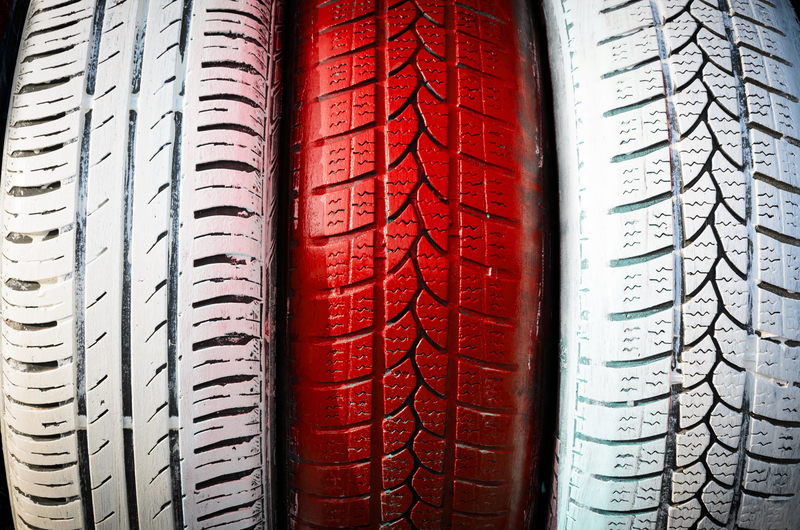Essential Rules for PPE Waste Disposal in Public and Private Spaces
In today's health-conscious era, personal protective equipment (PPE) such as masks, gloves, and face shields play a critical role in safeguarding public health. However, improper disposal of PPE waste can lead to environmental pollution, health hazards, and resource wastage. Understanding the essential rules for PPE waste disposal in both public and private spaces is not just a matter of cleanliness, but a crucial step toward protecting communities and the environment.
Why Proper PPE Waste Disposal Matters
The COVID-19 pandemic has drastically increased the use of PPE around the world. Incorrectly disposing PPE not only contributes to litter but also exposes waste handlers, the public, and wildlife to potential infection. PPE items are typically made from plastics, which do not decompose easily, thus escalating concerns over pollution and public health risks.
- Environmental Impact: Masks, gloves, and other single-use PPE can clog waterways and harm marine life when carelessly discarded.
- Transmission of Disease: Used PPE may contain infectious germs, putting waste collectors, sanitation workers, and the public at risk.
- Legal Repercussions: Many jurisdictions have specific regulations regarding PPE waste, making improper disposal a punishable offense.

Understanding Different Types of PPE Waste
Before delving into rules for PPE waste disposal, it is vital to distinguish between types of PPE and their associated risks:
- Masks: Includes surgical masks, N95 respirators, and reusable cloth masks. Disposable masks usually consist of non-biodegradable polypropylene.
- Gloves: Made from latex, nitrile, or vinyl, single-use gloves are widely used in healthcare, retail, and public spaces.
- Face Shields & Eye Protection: Typically manufactured from plastics, these may require different disposal approaches depending on the context.
- Other PPE: Including gowns, aprons, and shoe covers, mostly from hospitals, labs, or industries.
Key Guidelines for PPE Waste Disposal in Public Spaces
When disposing of PPE in public areas--such as streets, parks, offices, schools, and public transport systems--compliance with essential rules for PPE waste disposal is crucial to minimizing spread and pollution.
1. Use Designated PPE Disposal Bins
- Placement: Ensure PPE waste bins are visible and accessible in high-traffic areas.
- Labeling: Bins should be clearly marked for 'PPE Waste Only' to avoid cross-contamination.
- Type: Use closed-lid bins to reduce risk of exposure and wind-blown litter.
2. Handling Used PPE Safely
- Do Not Reuse: Always dispose of single-use PPE items after one use.
- Do Not Litter: Discarding used masks or gloves on sidewalks or in non-designated bins endangers cleaners and the general public.
- Bag and Seal: If no special bin is available, place PPE in a plastic bag, seal it tightly, and then dispose of it in a trash bin.
3. Maintain Regular Bin Collection
- Frequent Clearing: Empty PPE waste bins regularly to prevent overflow and contamination.
- Proper Transport: Ensure the collected waste is securely transported to treatment facilities following local regulations.
Essential PPE Waste Disposal Rules in Private Spaces
Homeowners, businesses, and private facilities must equally adhere to responsible PPE disposal practices to keep households and employees safe.
1. Domestic PPE Waste Management
- Designated Bag: Set aside a specific trash bin or bag for PPE. Do not throw them in regular recycling bins.
- Double-Bagging: For potentially infected PPE, use two bags layered together to minimize risk of leakage or exposure.
- Disposal: Once sealed, place the PPE waste bag directly into the general waste bin, not recyclables.
2. Workplace and Business Protocols
- Employee Training: Educate staff on correct PPE disposal procedures via posters, briefings, and demonstrations.
- Accessible Bins: Place PPE-only bins in high-use and strategic locations (entryways, exits, corridors, break rooms).
- PPE Handling Policy: Implement strict no-sharing and no-reuse policies for all single-use protective equipment.
3. Medical and Clinical Settings
- Biohazard Disposal: All PPE from medical environments should go into yellow-labeled, leak-proof biohazard bags or containers.
- Segregation: Do not mix PPE waste with regular or recyclable items.
- Incineration: Where possible, route infectious PPE waste to incineration facilities as determined by local legislation.
Legal and Regulatory Compliance in PPE Waste Disposal
Governments and health authorities worldwide have established stringent rules for safe disposal of PPE and other medical waste. Failure to comply can result in penalties or legal consequences. Here are some standard regulatory guidelines:
- OSHA (Occupational Safety and Health Administration): Mandates proper labeling, handling, and disposal of contaminated PPE in workplaces.
- EPA (Environmental Protection Agency): Provides recommendations for collection, transportation, and final disposal, focusing on non-medical environments.
- Local Authorities: Many cities and towns have additional PPE collection points, especially in stations, hospitals, and transport hubs. Always check local policies for specific instructions.
Innovative and Sustainable Practices in PPE Handling
The unprecedented surge in PPE waste has spurred global interests in *sustainable PPE waste management*. Where feasible, consider the following innovative approaches:
1. Reusable PPE Alternatives
- Cloth Masks and Gowns: Use washable alternatives when appropriate for the setting and risk involved.
- Disinfect and Reuse: Clean reusable PPE thoroughly following product and health authority guidelines.
2. PPE Waste Recycling Initiatives
- Pilot Projects: Some organizations now collect single-use masks and gloves for specialized recycling, transforming waste into pellets for industrial reuse.
- Innovative Technologies: Research is ongoing into biodegradable materials and scalable recycling methods for PPE plastics.
3. Public Education and Awareness
- Community Campaigns: Local governments and NGOs can run awareness campaigns, educating the public about the importance of proper PPE waste disposal.
- Clear Signage: Place instructional signs above bins and in public areas to prompt correct disposal habits.
Common Mistakes in PPE Waste Management
Even with clear guidelines, avoid these common errors that can undermine proper PPE waste disposal:
- Mixing PPE with Recyclables: Used masks and gloves should not be recycled with household plastics, paper, or metals, as they are contaminated.
- Flushing PPE Items: Do not flush masks, gloves, or wipes down toilets as this may cause environmental damage and plague sewage systems.
- Overfilling Bins: Overflowing PPE bins pose direct health hazards and increase the risk of accidental exposure.
- Hand Contact: Always wash or sanitize hands immediately after disposing of PPE, especially if a bin is touched.
Role of Individuals and Institutions
*Everyone has a responsibility* in managing and disposing of PPE waste safely. Here's how different actors contribute:
- Individuals: Practice safe removal and disposal, educate family and those around you, and never dispose of PPE irresponsibly.
- Employers: Provide adequate resources, training, and supervision to ensure safe PPE waste handling in the workplace.
- Public Organizations and Local Governments: Develop infrastructure and pass regulations that facilitate safe PPE waste management for the community.
- Schools and Educational Institutions: Promote PPE waste protocols among students and staff, ensuring compliance and safety.

Step-by-Step Guide: How to Dispose of PPE Waste Properly
Below is a practical step-by-step process to ensure correct PPE waste disposal in any setting:
- Remove PPE Carefully: Avoid touching the front surface of masks and gloves. Remove by straps and turn gloves inside out.
- Bag the Waste: Deposit PPE in a dedicated bag or lined bin.
- Seal It: Tightly tie the bag and use double-bagging if infection risk is suspected.
- Dispose in General Waste: Place the sealed PPE bag in a general waste (not recyclable) bin. In clinical areas, use the correct biohazard bin.
- Sanitize Hands: Immediately wash or sanitize hands after disposal.
- Clean Disposal Bins Regularly: Clean and disinfect the bin or area used for PPE storage regularly, especially if accessed by multiple people.
Conclusion: Making PPE Disposal a Shared Priority
Proper PPE waste disposal rules are essential for both public and private spaces. Adherence protects our communities, keeps key workers safe, and preserves our environment. By following legal requirements, adopting sustainable alternatives, and continually educating ourselves, we can tackle this new dimension of waste management together.
Remember: Every discarded PPE item counts. Dispose responsibly--your actions protect more than just your own health.